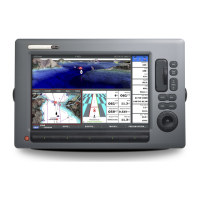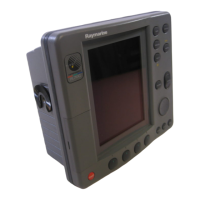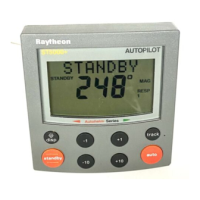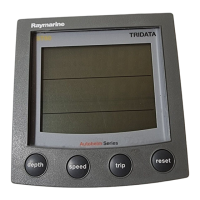Chapter 3: Standard Radar Operations 3-25
Introduction to
MARPA
Target Vector and History
The MARPA targets can be displayed with a vector line showing where they
will be at a certain time in the future, (assuming present course and speed).
You can select a relative or true vector and the vector length.
You can also select to view the target’s history, this appears as a series of dots
that are dropped by the target as it makes way. The interval between them is
selectable.
A relative vector indicates the target’s motion related to your own ship’s
motion. The target’s relative course and speed are calculated to produce a
vector that is displayed on the target only. This mode is used for collision
avoidance and threat assessment.
A true vector indicates the target’s motion over ground. In this mode true
vectors for the target and your own ship are displayed. MARPA measures the
direction in which the target and own ship are actually moving over the
ground. The result is the vessel’s true course, the rate of motion is the vessel’s
true speed. Consider this motion as if you were in a helicopter looking down
watching the targets move across the water. This mode can aid navigation.
Section 7.5 describes how to set the target vector and history parameters.
Repeater Displays
On an integrated HSB display system the repeater display (with the
appropriate software version) can access the MARPA functions, and targets
are shown on the repeater display. MARPA data is also sent on NMEA
allowing any other equipment, with the necessary functionality, to show the
tracked targets’ data.
Radar Range Scales
MARPA target acquisition is only available at radar range scales of up to
12nm, although tracking continues at all ranges.
Providing Heading Data for MARPA
The performance of MARPA on the radar display is dependent on the quality
of your heading sensor. In particular, MARPA requires heading data to be
frequently updated (i.e a minimum data output rate of 8 Hz). Heading data
must therefore be provided on NMEA.
The Raytheon ST80 Active (fluxgate) Compass connected on NMEA should
provide good results in reasonable sea states. However, in poor conditions, a
fluxgate compass with rate gyro, or a gyro compass will improve the
performance of MARPA. Contact Raytheon Customer Services or your
authorized Raytheon dealer for additional information.
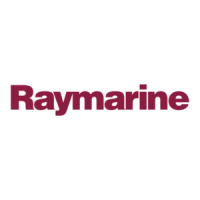
